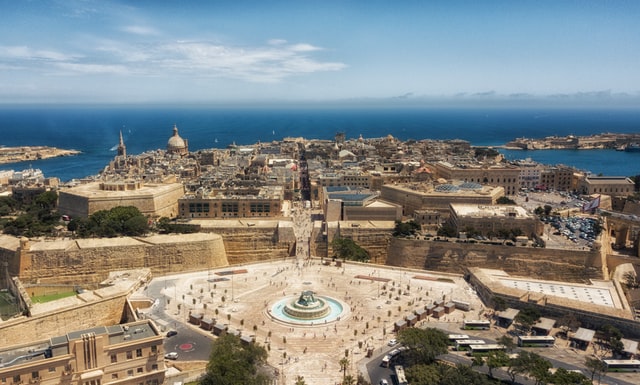
Valletta City Gate – A Historical Overview of Valletta’s Entrance
- Jul 10, 2021
...there were actually four other gates before this one.
Valletta City Gate or Bieb il Belt (in Maltese) refers to Valletta’s main entrance. The current gate was designed by Renzo Piano and was constructed between 2011 and 2014. However, most people don’t know that there were actually four other gates before this one.
First Gate (1569–1633)
The original gate was constructed during the reign of Grand Master Jean Parisot de Valette, to Francesco Laparelli/Girolamo Cassar’s designs. The gate was a simple opening, linked to the surrounding countryside via a bridge. In the late 16th century, the entrance was adorned by the addition of an arch above Valletta’s original gate.
Second Gate (1633–1853)
The 1633 gate was built under the auspices of Grand Master Antoine de Paule. It comprised a central arch with two smaller arches at each side, as well as a wooden drawbridge that linked the city to the surrounding areas. The gate was re-named and modified several times. By the late 18th and early 19th, there were a number of additional features that were not present in the original design. It was demolished in 1853.
Third Gate (1853–1964)
The third gate was built during the British period. It was designed by Col. Thompson and consisted of two main archways accompanied by two smaller arches and the statues of Philippe Villiers de L’Isle-Adam, Jean Parisot de Valette and Pope Pius V.
By the 1900s, the city gate had become too small for the influx of people that were visiting the city. While the third gate survived World War II, the statues of the Grand Masters were destroyed and plans were made to replace the gate with a larger one.
Fourth Gate (1965–2011)
The fourth city gate followed the Italian rationalist style and was designed by Alziro Bergonzo. The gate was simple yet practical, consisting of a large central opening and two other openings on the side.
This gate was quite controversial, as the design was highly criticised by the Chamber of Architects, leading to calls from the public to replace the gate. The fourth city gate was finally demolished in May 2011.
Fifth Gate (2014–present)
The fourth gate was replaced by the present Valletta City Gate. The current gate was designed by Renzo Piano and was accompanied by the construction of the new parliament and the transformation of the Royal Opera House ruins into Pjazza Teatru Rjal. The fifth gate is very different from the previous ones since, stylistically, it’s very similar to the ancient Egyptian Temple of Edfu.
The Prospettiva Art Installation
The five gates’ unique histories were honoured by Prospettiva – an art installation that took place in 2014. The installation featured different components from the five gates and was curated/designed by architect Chris Briffa as part of the celebrations that marked Valletta’s selection as the European Capital of Culture of 2018.




